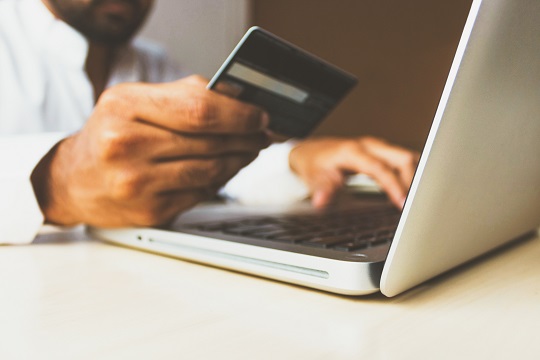When you want to sell a new product in your store or make a new product in your factory, you have to decide if you want to make the part (or product) yourself or buy it from a supplier.
Yes, you usually have two choices: making it yourself or buying it from someone else.
You need to think carefully about what to do. With full calculations. Because this choice will directly affect the profit or loss of your product in the future.
How to decide?
What to keep in mind?
This is the topic of our talk this time.
But before we do that, make sure you’ve also joined the scmguide telegram channel so you can keep up with the latest posts on this blog and other information about supply chain management.
Table of Contents
How do you decide whether to make something or buy it?
We come to an important question. What should be thought about before deciding to make or buy?
Let’s go into more detail.
Cost
The first factor is, of course, cost.
Yes, you have to figure out how much it will cost to make your own part or product and how much it will cost to buy it from a supplier.
You should choose the least expensive one.
What costs should you think about?
Buying facilities
You need production facilities if you want to make your own parts or products.
It can be in the form of production machines, equipment, or the production area itself.
Labor costs
In addition, you need people to work in production facilities.
You need to hire them and give them enough training to do your production process.
And hiring people means you have to pay them a salary and all their benefits.
Storage cost
Storage costs are also something you should think about.
When you make your own parts or products, you need storage space for both the raw materials and the finished goods.
You’ll need places to store things (maybe with shelves?) and tools to move things around, such as forklifts and hand pallets.
And maybe you also have to put money into all of these facilities.
What about the costs that must be paid to buy parts/products?
Of course, you have to pay for the purchase and shipping costs so that the parts/products can get to your place.
You might also like:
- 10 Ways to Reduce Supply Chain Costs by a Huge amount
- 4 Important Things to Put in Your Logistics Budget
- 5 Supply Chain Challenges Before You and How to Overcome Them
Skills and capabilities
The next thing you should think about is your own abilities.
Are your current facilities able to make parts and products that meet the desired standards?
Do workers in your company have enough knowledge and skills to make this part or product?
Can you make it more efficiently than the supplier could?
Because we know that this efficiency will affect the costs you have to pay, which will have a direct effect on your profits/losses.

Or, looking at it from the other side, are your suppliers able to make parts and products that meet the specifications and standards you set?
The answers to the questions above can help you decide whether it is better to make or buy the component/product.
Time
Talking about timing, when do you need those parts or products?
Do you have enough time to develop and make components/products before launch?
Or, will your supplier be able to do this?
Or, the parts or products you need are common and available on the market, so you can just buy them without any preparation.
Time is also something you should think about before making a decision.
Life-cycle
The next question is how long you will be selling or needing the component/product.
If your need is only temporary, it would be better to buy components or products that are commonly sold from suppliers. You don’t need to put any money into this.
But if you want it for a long time, you might want to consider making it yourself. Of course, you should think about other things before making this decision.
Volume
If you make your own parts or products, then the volume you need to think about is the volume you need for your own needs.
If you only need a small amount, the costs to make it tend to be higher than if you bought it from a supplier.
Why?
Because if your part or product is in high demand, your supplier will combine your orders with those of their other customers.
With bigger orders, they can get cheaper prices on raw materials from their suppliers, which lowers the overall cost of production.
You might also like:
- 7 Effective Ways to Get 100% Inventory Accuracy
- Can Excess Inventory Benefit Your Business?
- How to Set Cost Reduction Target Based on Supply Chain Cost Drivers
What are the consequences of making the wrong choice?
If you make the wrong choice about whether to make or buy, you won’t get the benefits you expect. Or at least your profit will be less than if you had made the right choice.
Why is that so?
Because making the wrong choice will cost you more than you should spend.
Not to mention if that causes you to be late releasing your new product, which means you lose sales momentum.
Why is the make or buy decision so important?
As I said above, this decision can have a direct effect on profits, but it can also affect the quality of the components or products you get.
When the person who makes it doesn’t know what they’re doing, the quality of the component or product will suffer.
Which in turn will affect how happy your customers are, which will lead to fewer sales.
And making the wrong decision can also affect whether or not your product is on the market.

Imagine if it turns out that the party that has to provide parts or products doesn’t have enough capacity to do so. Your product will be taken off the market, and your competitors will be happy to take your market share.
Conclusion
When you put out a new product, you have to decide if you will make the parts yourself or buy them from someone else.
You should think carefully about this decision, taking into account many things, such as cost, capacity, capability, or volume.
The right choice about whether to make or buy will give you the return you want. And the quality and availability of your products on the market will be kept up.
So make sure you make the right choice.
Hope it’s useful!
Share this article with your other coworkers so they can also learn from it. Make sure you have also joined the scmguide telegram channel to keep up with the latest posts on this blog and learn more about supply chain management. You can use any of the articles on this blog for whatever you want, even for profit, without having to give credit.
 by
by 
